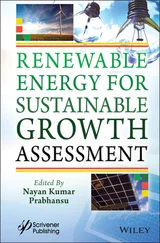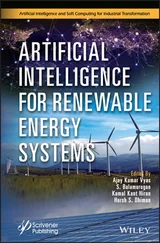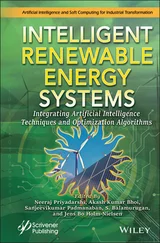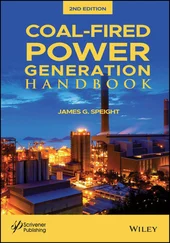James G. Speight - Encyclopedia of Renewable Energy
Здесь есть возможность читать онлайн «James G. Speight - Encyclopedia of Renewable Energy» — ознакомительный отрывок электронной книги совершенно бесплатно, а после прочтения отрывка купить полную версию. В некоторых случаях можно слушать аудио, скачать через торрент в формате fb2 и присутствует краткое содержание. Жанр: unrecognised, на английском языке. Описание произведения, (предисловие) а так же отзывы посетителей доступны на портале библиотеки ЛибКат.
- Название:Encyclopedia of Renewable Energy
- Автор:
- Жанр:
- Год:неизвестен
- ISBN:нет данных
- Рейтинг книги:3 / 5. Голосов: 1
-
Избранное:Добавить в избранное
- Отзывы:
-
Ваша оценка:
- 60
- 1
- 2
- 3
- 4
- 5
Encyclopedia of Renewable Energy: краткое содержание, описание и аннотация
Предлагаем к чтению аннотацию, описание, краткое содержание или предисловие (зависит от того, что написал сам автор книги «Encyclopedia of Renewable Energy»). Если вы не нашли необходимую информацию о книге — напишите в комментариях, мы постараемся отыскать её.
Written by a highly respected engineer and prolific author in the energy sector, this is the single most comprehensive, thorough, and up-to-date reference work on renewable energy.
Encyclopedia of Renewable Energy: Audience
Encyclopedia of Renewable Energy — читать онлайн ознакомительный отрывок
Ниже представлен текст книги, разбитый по страницам. Система сохранения места последней прочитанной страницы, позволяет с удобством читать онлайн бесплатно книгу «Encyclopedia of Renewable Energy», без необходимости каждый раз заново искать на чём Вы остановились. Поставьте закладку, и сможете в любой момент перейти на страницу, на которой закончили чтение.
Интервал:
Закладка:
In principle, the larger the carbon and hydrogen content in raw materials, employed in gas-to-liquids processing, is, the easier and more efficient the carbon monoxide and hydrogen. Hence, the natural gas pathway is the most convenient one since natural gas is gaseous and contains virtually carbon and hydrogen only. Solid raw materials (biomass, coal) involve more processing, because first they have to be gasified and then the product gas should be cleaned up from other components such as nitrogen oxides (NOx), sulfur oxides (SOx), and particulate matter to the extent of getting as high as possible purity of syngas.
Two basic types of biomass raw material are distinguished, viz, woody material and herbaceous material. Currently, woody material accounts for approximately 50% of total world bioenergy potential. Another 20% is straw-like feedstock, obtained as a by-product from agriculture. The dedicated cultivation of straw-like energy crops could increase the herbaceous share up to 40%.
See also: Bioalcohols, Biodiesel, Biofuels – First Generation, Biofuels From Synthesis Gas, Biofuels – Second Generation, Biofuels – Third Generation, Biogas, Gasification, Methanol, Ethanol, Vegetable Oil.
Biofuels – Liquid
Liquid biofuels, as their name suggests, are fuels derived from biomass and processed to produce a combustible liquid fuel. There are two main categories: (i) alcohol fuels, such as methanol and ethanol, and (ii) vegetable oils, which are derived from plant seeds, such as sunflower, sesame, linseed, and rapeseed.
Methanol is produced by a process of chemical conversion from any biomass with a moisture content of less than 60%. Potential feedstocks include forest and agricultural residues, wood, and various energy crops. As with ethanol, it can either be blended with gasoline to improve the octane rating of the fuel or used in its neat form. Both methanol and ethanol are often preferred fuels for racing cars.
Ethanol is the most widely used liquid biofuel and is produced by fermentation of sugars and starches or cellulosic biomass. Most commercial production of ethanol is from sugar cane or sugar beet, as starches and cellulosic biomass usually require expensive pre-treatment. Ethanol is used as a renewable energy fuel source as well as being used for manufacture of cosmetics, pharmaceuticals, and also for the production of alcoholic beverages.
Vegetable oils are used to produce biodiesel. The process of oil extraction from the biomass is carried out the same way as for extraction of edible oil from plants. There are many crops grown in rural areas of the developing world which are suitable for oil production – sunflower, coconut, cotton seed, palm, rapeseed, soy bean, peanut, hemp, and more. Sunflower oil, for example, has an energy content approximately 85% that of diesel fuel.
There are two well-established technologies for oil extraction: (i) the screw press and (ii) solvent extraction. The simple screw press, which is a device for physically extracting the oil from the plant - this technology is well suited to small-scale production of oil as fuel or as foodstuff in rural areas. The press can be motor-driven or hand-operated. On the other hand, solvent extraction is a chemical process which requires large, sophisticated equipment. This method is more efficient - that is, it extracts a greater percentage of the oil from the plant - but is less suited to rural applications.
Biodiesel production is not complex – the vegetable oil is converted to a useable fuel by adding ethanol or methanol alcohol along with a catalyst to improve the reaction. Small amounts of potassium hydroxide or sodium hydroxide (commonly called lye or caustic soda, which is used in soap making) are used as the catalyst material. Glycerine separates out as the reaction takes place and sinks to the bottom of the container. This removes the component that gums up the engine so that a standard diesel engine can be used. The glycerine can be used as a degreasing soap or refined to make other products.
See also: Bioalcohols, Biodiesel, Biofuels, Cellulosic Biomass, Methanol, Ethanol, Vegetable Oil.
Biofuels – Platforms
The technical platform chosen for second-generation biofuel production will be determined in part by the characteristics of the biomass available for processing. The majority of terrestrial biomass available is typically derived from agricultural plants and from wood grown in forests, as well as from waste residues generated in the processing or use of these resources. Much of the biomass being used for first-generation biofuel production includes agricultural crops that are rich in sugars and starch. Because of the prevalence of these feedstocks, the majority of activity toward developing new products in the United States has focused on the bioconversion platform.
Bioconversion isolates sugars from biomass, which can then be processed into value-added products. Native sugars found in sugarcane and sugar beet can be easily derived from these plants, and refined in facilities that require the lowest level of capital input. Starch, a storage molecule which is a dominant component of cereal crops such as corn and wheat, is comprised wholly of glucose. Starch may be subjected to an additional processing in the form of an acid- or enzyme-catalyzed hydrolysis step to liberate glucose using a single family of enzymes, the amylases, which makes bioconversion relatively simple. Downstream processing of sugars includes traditional fermentation, which uses yeast to produce ethanol; other types of fermentation, including bacterial fermentation under aerobic and anaerobic conditions, can produce a variety of other products from the sugar stream.
Forest biomass or agricultural residues are almost completely comprised of lignocellulosic molecules (wood), a structural matrix that gives the tree or plant strength and form. This type of biomass is a prime feedstock for combustion, and indeed remains a major source of energy for the world. The thermochemical platform utilizes pyrolysis and gasification processes to recover heat energy as well as the gaseous components of wood, known as synthesis gas (or syngas) which can then be refined by the Fischer-Tropsch process into synthetic fuels such as hydrocarbon liquids, methanol, and ethanol.
Lignocellulose is a complex matrix combining cellulose, hemicellulose, and lignin, along with a variable level of extractives. Cellulose is comprised of glucose, a six-carbon sugar, while hemicellulose contains both five- and six-carbon sugars, including glucose, galactose, mannose, arabinose, and xylose. The presence of cellulose and hemicellulose therefore makes lignocellulose a potential candidate for bioconversion. The ability of the bioconversion platform to isolate these components was initially limited, as the wood matrix is naturally resistant to decomposition. Recent advances, however, have made this process more commercially viable. Costs remain higher than for starch-based bioconversion, but there is added potential for value-added products that can utilize the lignin component of the wood.
In order to incorporate all aspects of biofuel production, including the value of co-products and the potential of the industry to diversify their product offering, we employ the biorefinery concept. The biorefinery concept is important because it offers many potential environmental, economic, and security-related benefits to society. Biorefineries provide the option of co-producing high-value, low-volume products for niche markets together with lower-value commodity products, such as industrial platform chemicals, fuels, or energy, which offsets the higher costs that are associated with processing lignocellulosic materials.
The two technological platforms being explored for the lignocellulose-based biorefinery are complementary. Each technological platform provides different intermediate products for further processing. It is the range of these intermediates that dictates the types of end products that are likely to be successful in a commercial sense.
Читать дальшеИнтервал:
Закладка:
Похожие книги на «Encyclopedia of Renewable Energy»
Представляем Вашему вниманию похожие книги на «Encyclopedia of Renewable Energy» списком для выбора. Мы отобрали схожую по названию и смыслу литературу в надежде предоставить читателям больше вариантов отыскать новые, интересные, ещё непрочитанные произведения.
Обсуждение, отзывы о книге «Encyclopedia of Renewable Energy» и просто собственные мнения читателей. Оставьте ваши комментарии, напишите, что Вы думаете о произведении, его смысле или главных героях. Укажите что конкретно понравилось, а что нет, и почему Вы так считаете.












